Reserve Bank of Australia Annual Report – 2019 Communication and Community Engagement
The Bank seeks to enhance the community's understanding of its responsibilities and policy decisions through a broad communication program. Staff in the Bank's Head Office and State Offices work to help the community understand the Bank's role and, in turn, to understand the community's perspectives, priorities and concerns. The Bank also supports academic research, continues to build its public education program and operates a museum.
Publications and Speeches
The Reserve Bank communicates its policy decisions, analysis and information about its operations through publications and speeches. Announcements about monetary policy decisions are made shortly after each Reserve Bank Board meeting and minutes are released two weeks later. A media release is published following each Payments System Board meeting, outlining issues discussed at the meeting and foreshadowing any forthcoming documents to be released by the Bank. In December 2018, the Bank, as secretariat to the Council of Financial Regulators, commenced publishing a statement on the Council's website following its quarterly meetings.
The Reserve Bank produces a regular series of reports aligned to its responsibilities. The quarterly Statement on Monetary Policy provides information about the Reserve Bank's assessment of current economic and financial conditions, along with the outlook for economic activity and inflation in Australia. To aid broader understanding of the forces shaping the economic outlook, in November 2018 the Bank began including forecasts for a wider set of economic variables in the Statement than had previously been the case.
The Financial Stability Review, published semi-annually, provides a detailed assessment of the condition of Australia's financial system and potential risks to financial stability. In 2018/19, areas of focus included high household debt in Australia and the slowing housing market, bank culture and operational risk, and risks stemming from global trade tensions. The Review also reported that the financial system has become more resilient in recent years owing to significant improvements in housing lending standards and the implementation of changes in financial regulation, and in financial institutions' own policies and practices in the decade since the onset of the financial crisis.
The Reserve Bank's quarterly Bulletin contains analysis of a broad range of economic and financial issues as well as aspects of the Bank's operations. During 2018/19, 41 articles were published in the Bulletin. As part of the Bank's public education program, five ‘Explainers’ on key economic concepts and issues were published along with an article for teachers that bridged the gap between the typical textbook explanation of monetary policy implementation and what the Bank actually does.
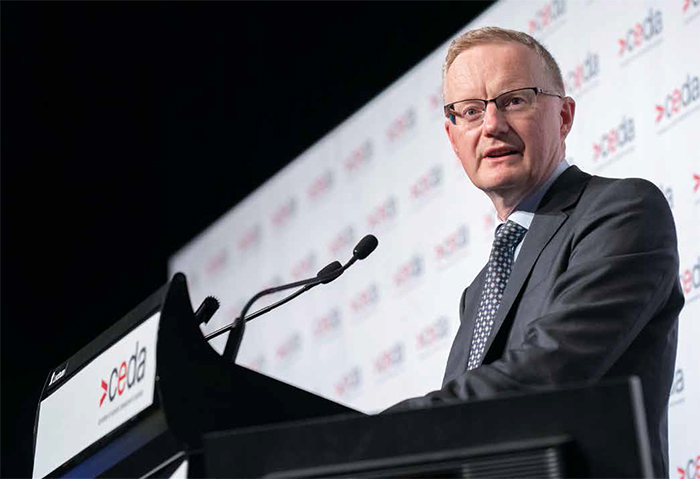
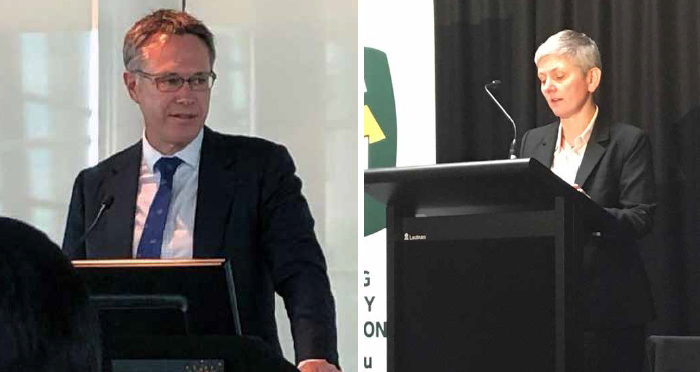
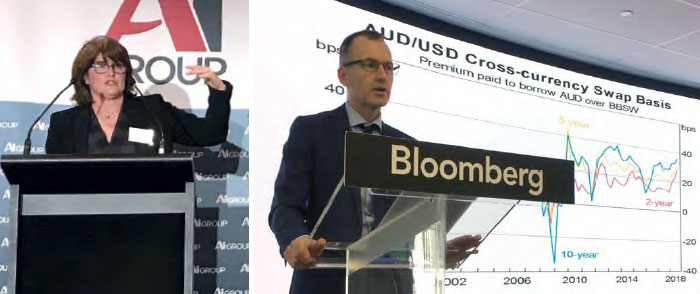
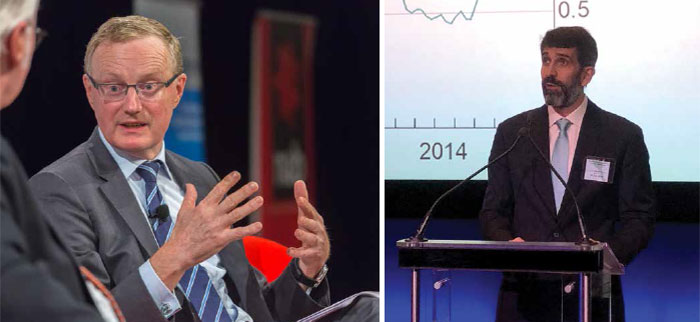
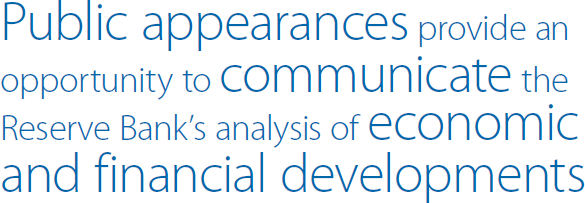
Public appearances provide an opportunity to communicate the Reserve Bank's analysis of economic and financial developments and how they have influenced monetary policy decisions, as well as respond to questions in a public forum. During 2018/19, the Governor, Deputy Governor and other senior officers gave around 50 public speeches on various topics. Senior staff also participated in a number of public panel discussions. More regional centres around Australia were included in the public appearance schedule with questions taken after almost all speeches. In addition to speeches on monetary policy, there were speeches on the impact of climate change on the economy, lessons from the global financial crisis, conditions in the household sector and the importance of collaboration in managing payment systems. Senior officers also addressed the journey to a near-cashless payments system, cryptocurrencies and distributed ledger technology, Australian equities and interest rate benchmark reform. Audio and text files of these speeches, the associated question and answer sessions and panel discussions were published on the Bank's website to facilitate transparency and accessibility.
The Reserve Bank publishes information in both electronic and hard-copy formats, although access to information is now mostly online. During the year, a page for the Bank on Facebook was launched to reach and respond to questions from a broader cross-section of the community. Followers of the Bank's social media accounts on Twitter, LinkedIn and Facebook have grown in number to over 75,000, while the number of subscribers to the conventional email alert service is around 10,000. Visitors to the Bank's website also made use of the RSS feeds, which allowed them to receive alerts about updates to selected data, media releases, speeches, research papers and other publications, including those related to Freedom of Information requests.
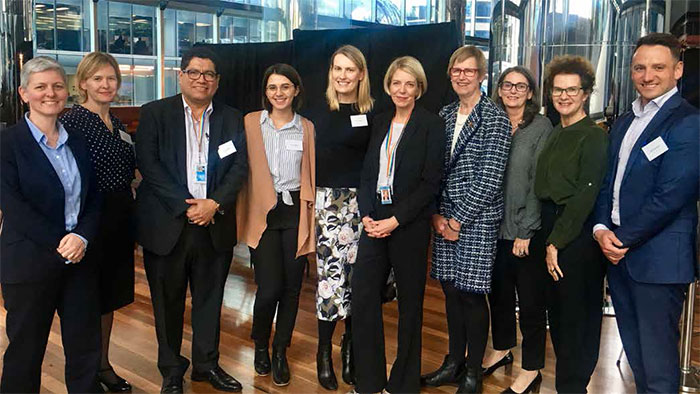
The Reserve Bank's website has continued to evolve with new and refreshed content. The production process for the Statement of Monetary Policy and similar publications was made more efficient; the digital version can be accessed immediately in different formats upon publication. A new website was created for the Council of Financial Regulators, which, in conjunction with the quarterly statements, enhances its transparency. The Banknotes microsite has continued to be used to communicate information about the new banknote series being issued by the Bank, with the new $50 banknote entering general circulation and the design of the new $20 banknote revealed in 2018/19.
Regional and Industry Liaison
Staff in the Reserve Bank's regional and industry liaison team, which operates from four State Offices around Australia and the Bank's Head Office in Sydney, work together to conduct the Bank's liaison program. The State Offices are located in Adelaide, Brisbane, Melbourne and Perth. Staff in the liaison program regularly meet with businesses, associations, governments and community organisations from across the country. In 2018/19, over 750 liaison meetings were conducted. Staff from the State Offices also regularly visit Tasmania, the Northern Territory and regional areas across the country, to gather information on economic conditions beyond Australia's largest cities. In 2018/19, liaison staff visited Ballarat, the Barossa Valley, Bunbury, Geelong, the Gold Coast, the Kimberley, Newcastle, Toowoomba and Wollongong.
Information provided by liaison contacts helps the Bank monitor trends in the Australian economy, as well as the effect of unusual events, such as natural disasters. This information helps to provide a timely reading on the economy and complements data from official sources. Broad messages from liaison are incorporated into the Bank's policy discussions, board material and public communication. Liaison information is also regularly drawn upon for articles in the Reserve Bank Bulletin; in 2018/19, Bulletin article topics included firms' use of technology and firm-level insights into skills shortages and wages growth.
Staff from the State Offices also have an important role in the Bank's communication with members of the public, holding discussions with a broad cross-section of the community. In 2018/19, staff members in State Offices gave around 40 presentations to members of the community, including at schools, business roundtables and regional chambers of commerce. Bank employees also presented summaries of the Statement on Monetary Policy during the year to over 300 participants in the liaison program.
As noted in the chapter on ‘Governance and Accountability’, the Reserve Bank Board meets in state capitals other than Sydney on a regular basis. Following these Board meetings, a dinner is held with members of the local community, including representatives and leaders from politics, business, the public sector, and educational and community organisations. Every few years, a similar dinner is held in Sydney. In 2018/19, community dinners were held in Perth in September 2018 and Sydney in June 2019. These dinners provide an opportunity to strengthen relationships between local communities and the Bank.
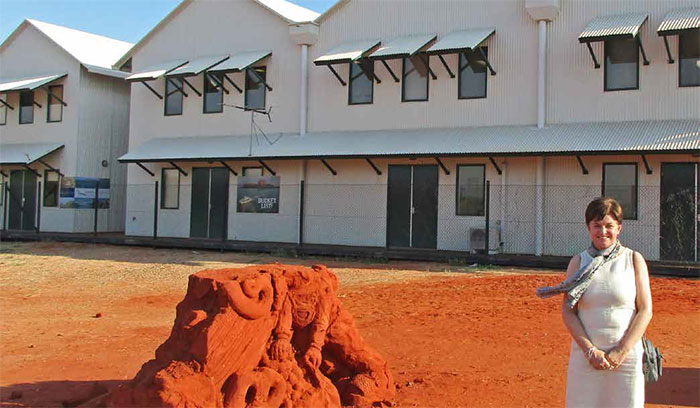

The Reserve Bank also convened its annual Small Business Finance Advisory Panel, which was established in 1993. The panel discusses issues relating to the provision of finance and the broader economic environment for small businesses. Membership of the panel is drawn from a range of industries across the country. The panel provides a valuable source of information on financial and economic conditions faced by small businesses.
Consultations and Public Enquiries
In carrying out its various responsibilities, the Reserve Bank consults extensively with interested parties. The Bank maintains ongoing engagement with a wide variety of groups to inform its policy and operational activities. Senior Bank staff meet regularly with representatives of various domestic and international official agencies, business groups and financial market participants to discuss economic and financial developments.
In the first half of 2019, staff from the Payments Policy Department conducted two consultations on policy issues. One was in relation to proposed changes to the Reserve Bank's interchange standards. The other was conducted in conjunction with staff from the Australian Competition and Consumer Commission and related to access to, and the functionality of, the New Payments Platform (NPP). Reports from these consultations were released in May and June, respectively.
The Reserve Bank held two meetings of its Payments Consultation Group in 2018/19. This group, which was established in 2014, is a structured mechanism for representatives of various users of the payments system (consumers, merchants, other businesses and government agencies) to convey their views on payments system issues as an input to the payments policy formulation process. More details on the activities of this group are provided in the Payments System Board Annual Report.
During the year in review, staff members from Payments Policy Department participated in a number of industry conferences and public events discussing payments issues. Topics covered included the provision of least-cost routing for card payments, real-time payments, open banking and developments in the ATM industry. Staff from Payments Settlements Department continued to conduct regular liaison meetings with Reserve Bank Information and Transfer System (RITS) members and industry groups, such as the Australian Payments Network (AusPayNet). Staff also participated in various industry forums, including AusPayNet's High Value Clearing System Management Committee. A senior staff member sits on the board of AusPayNet and another senior staff member sits on the board of NPP Australia Limited, the company established to build and operate the NPP. Staff from Payments Settlements and Banking departments represent the Bank on NPP operating committees. Participation in these groups and a number of other banking and payments industry forums ensures the Bank remains abreast of developments in these areas and can contribute to innovations in the banking and payments industry.
The Reserve Bank sponsors, and its International Department provides the secretariat to, the Australian Foreign Exchange Committee (AFXC). Among other things, in 2018/19 the AFXC worked to promote the adoption of the FX Global Code in the Australian wholesale foreign exchange market. The code is maintained by the Global Foreign Exchange Committee, of which the AFXC is a member committee, and the Deputy Governor is the Chair.
During the year, the Bank received approximately 2,300 public enquiries on a broad range of topics, including monetary policy, the economy and regulation of the payments system. Responses were provided to all enquiries where possible. Staff from Note Issue Department also continued their engagement with industry and members of the public in relation to the new banknote series, as discussed in the chapter on ‘Banknotes’.
Research
The Reserve Bank publishes the results of longer-term research conducted by staff in the form of Research Discussion Papers (RDPs). The views expressed in RDPs are those of the authors and do not necessarily represent those of the Bank. During 2018/19, nine RDPs were published on a range of topics in the Bank's areas of interest, including the Australian housing market, low wages growth, monetary spillovers and consumer credit card choices. Reserve Bank staff also published their research in various external journals, including the Economic Record, International Journal of Forecasting, Australian Economic Review and Studies in Non-Linear Dynamics and Economics.
Research undertaken at the Reserve Bank is presented at external conferences and seminars. In 2018/19, Bank staff presented at a number of conferences and institutions in Australia and overseas. Of particular note was the engagement of an Economic Research staff member providing technical assistance to the Research and Economics Department of the Bank of Papua New Guinea.
The Reserve Bank hosts conferences to foster interaction between academics, central bankers and other economic practitioners on topical policy issues. The Bank's annual conference for 2019 focused on the possible explanations for, and solutions to, low wage growth. Economic Research staff presented two papers at this conference. Conference papers and discussions were published on the Bank's website in July 2019. The next annual conference is scheduled for the first half of 2020.
In 2018/19, the Reserve Bank also hosted visits from a number of policymakers from domestic and overseas institutions, including the Federal Reserve Bank of St Louis, Norges Bank, the International Monetary Fund, the Bank of Canada, the Bank for International Settlements and the Reserve Bank of New Zealand. Other visitors included academics from a range of institutions, including Boston College, University of California, Warwick University, the Brookings Institution, the University of Columbia and the University of Chicago. During their visits, these visitors presented seminars, taught short courses and participated in research activities at the Bank.
The Reserve Bank sponsors economic research in areas that are closely aligned with its primary responsibilities. This sponsorship includes financial support for conferences, workshops, data gathering, journals and special research projects, and encompasses areas of study such as macroeconomics, econometrics and finance. In addition, the Bank provides sponsorship to the Centre for Independent Studies and the Sydney Institute. It is a corporate member of the Lowy Institute for International Policy and The Ethics Centre and an associate member of The South East Asian Central Banks (SEACEN). The Bank is a member organisation of the Committee for Economic Development of Australia (CEDA); the Bank's membership of CEDA includes an annual research contribution.
In 2018/19, the Reserve Bank continued its longstanding contribution towards the cost of a monthly survey of inflation expectations undertaken by the Melbourne Institute of Applied Economic and Social Research at the University of Melbourne. The Bank also maintained its contribution to a quarterly survey of union inflation and wage expectations undertaken by the Australian Council of Trade Unions.
The Reserve Bank continued to contribute to funding the International Journal of Central Banking, the primary objectives of which are to disseminate first-class, policy-relevant and applied research on central banking and to promote communication among researchers both inside and outside central banks.
The Reserve Bank is providing financial support for research on population ageing being conducted by the Australian Research Council Centre of Excellence in Population Ageing Research (CEPAR), based at the University of New South Wales. The Reserve Bank also sits on the Advisory Board of CEPAR.
The Reserve Bank makes a financial contribution to a number of conferences in economics and closely related fields. In 2018/19, these conferences included: the Economic Society of Australia's Australian Conference of Economists; the Economic Society of Australia's Women in Economics Network Retreat; the Melbourne Money and Finance Conference; the University of New South Wales Australasian Finance & Banking Conference; the University of Technology Sydney's Investment Management Research Program Conference; the PhD Conference in Economics and Business; the Melbourne Institute Macroeconomic Policy Meetings; and the Australian and New Zealand Econometric Study Group Meeting. The Bank also supports the discussion of economic issues in the community by providing a venue for the Economic Society of Australia's Lunchtime Seminar and Emerging Economist Series.
In conjunction with the Australian Prudential Regulation Authority (APRA), the Reserve Bank has continued to sponsor the Brian Gray Scholarship Program, initiated in 2002 in memory of a former senior officer of the Bank and APRA. Two scholarships were awarded under this program in 2019. The cost to the Bank of these scholarships was $15,000.
The Economic Society of Australia (Tasmanian Branch) has established a scholarship to honour the memory of the late Professor Mardi Dungey, who was a former employee of the Reserve Bank. A contribution to funding the scholarship will be made by the Bank.
The total value of support provided for research and education in 2018/19 was $342,669.
Education
Another key part of the Reserve Bank's community engagement is interacting with students and educators. The Bank has a Public Access & Education team, whose role is to support educators and students and coordinate the efforts of staff across the Bank to deliver a public education program. The team's main focus is on economics students and educators at senior high school level (though activities are also undertaken for different stages of learning, both at school and university).
The focus on economics education is motivated by the importance of economic literacy in the wider community. The lives of all Australians are affected by their personal daily economic decisions, and by the quality of economic decision-making by businesses and government. The decline in the study of economics is, therefore, of concern. Nationally, the number of high school students studying economics in Year 12 has fallen by around 70 per cent since the early 1990s. The share of high schools offering economics has also fallen significantly over this period, with the decrease being most pronounced for comprehensive government schools. In addition, female participation has fallen sharply, as has participation by students from schools that are culturally diverse or located in lower-income areas. These trends are even more pronounced at university level. Consequently, the student base for economics is diminishing in both size and diversity. The Reserve Bank is aiming to help redress this by raising awareness of what economics is, its relevance and the career opportunities that economics can provide. To support schools, the Bank is creating resources that are aligned with curricula, providing presentations to students and providing educators with professional development opportunities. These services are available to all school sectors, with efforts to increase access to them by schools outside metropolitan areas.
Over the past year, significant progress was made in the public education program. Reserve Bank staff gave presentations to over 7,000 students, of whom more than 6,000 were high school students, and had a presence in all states. The extent of interaction was made possible by the Bank's Ambassador program, involving around 50 economists who engage with students using presentations aligned with key aspects of the relevant curriculum. The Ambassadors worked closely with staff in the Bank's State Offices, who also participate in educational talks and help ensure that they are available to students and educators across the country. To promote equitable access, talks were delivered at Bank premises and at events that multiple schools can attend. In addition, an increasing number of talks were given directly in school classrooms by the Ambassadors, who explain economic concepts and issues while also giving students the opportunity to meet young economists, learn about their work and careers, and be exposed to role models.
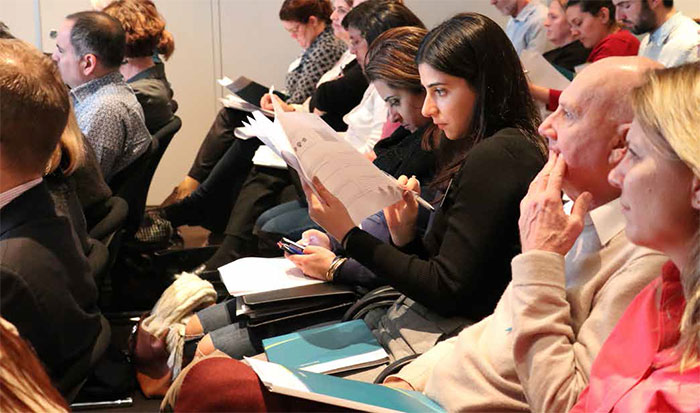

A classroom talk was given this year at the Northern Territory School of Distance Education, where an Ambassador gave a ‘school of the air’ Skype class to Year 12 economics students, whose class spanned students from Darwin to a remote cattle station on the Barkly Tablelands. Another presentation was given in Broome, Western
Australia, at a high school offering economics for the first time. Ambassadors also visited high schools in regional centres in most states.
The public education team produced additional resources for students and educators, many of which are also relevant for more general audiences. The resources range from simple one-page explanations of economic concepts and issues (the ‘In a Nutshell’ series) through to more detailed explanations (the ‘Explainer’ series). In addition, the team created an interactive resource (the ‘Inflation Explorer’) that enables users to explore how the prices of individual goods and services, and overall inflation, have changed over time. These curriculum-linked resources can be found in the education section of the Reserve Bank's website, which has proved popular with school students and teachers (with over 300,000 page views and downloads during 2018/19).
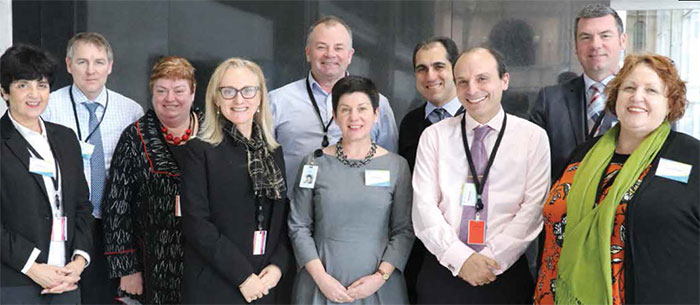
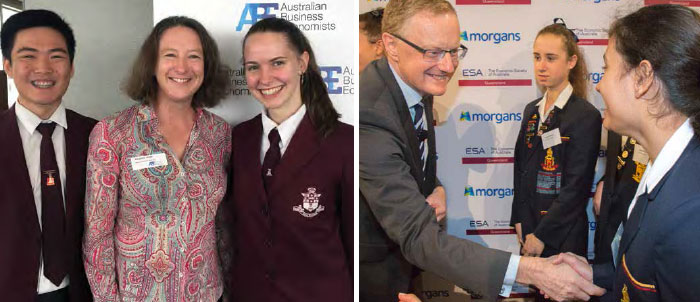
The Reserve Bank amplified its efforts to reach a new audience of students by producing materials that help students better understand what economics is, develop an interest in the subject and encourage them to build careers in economics. The ‘Explore Economics’ content is available physically and online, and was showcased at careers fairs. For the second year, the Bank participated in several major careers fairs and Bank staff had substantive conversations about studying economics with around 1,400 students. The Bank also participated for the first time in an education workshop for students who were unfamiliar with economics. The students spanned junior to senior high school years, and were from regional and rural areas in Victoria.
The Reserve Bank continued to support teachers through professional development activities. It held its third Teacher Immersion Event for economics teachers in June 2019. The Event is formally accredited for maintaining proficient teaching standards. The 2019 Event included addresses by the Governor and Deputy Governor, presentations from Bank staff on core economic topics, practical sessions on how Bank content could be delivered in the classroom, along with opportunities for teachers to participate in an economics Q&A with senior staff. Teachers from across the country attended, including from regional areas. The Bank also introduced a Topical Talks series, where teachers attended a lecture given by a senior Bank staff member on a topical economic issue relevant to Year 12, and were able to interact with academic and professional economists as well as Bank Ambassadors. Key sessions of Bank-hosted professional development activities were filmed and made available on the Reserve Bank's website for a wider audience. In addition, Bank staff presented at various accredited professional development events hosted by peak national and state teaching bodies, including for the first time one for regional economics teachers in Coffs Harbour, New South Wales. Presentations extended to interactive workshops, which were highly valued by teachers.
In addition to the delivery of the public education program, submissions were made to state education authorities conducting the ‘New South Wales Curriculum Review’ and the South Australian ‘SACE Subject Consultation – Economics Renewal’. The Bank put forward a case for the inclusion of more economics in the curriculum and increasing engagement with the subject.
The Educators Advisory Panel – which comprises external education experts to advise on the strategic direction of the Bank's public education program – met twice during the year to review the program's progress.
Museum
The Reserve Bank's Museum houses a permanent collection of artefacts and hosts periodic exhibitions. It also offers regular talks and tours for a wide cross-section of visitors and students. In the permanent collection, visitors can view the various types of money used in Australia before Federation through to the current innovative new series of banknotes. Visitors can observe the evolution of the nation's identity as expressed through its banknotes and learn about the influential women and men depicted on them. They can also see the artwork used in banknote design, learn about how banknotes are made and discover their security features.
The Museum has been showcasing the new series of ‘next generation’ banknotes in an additional permanent display called A New Vision for Banknotes. In 2018/19, information about the new $50 banknote was added to that for the $10 banknote released in 2017 and the $5 banknote, which launched the new series in 2016. The display has been designed to capture the innovative qualities of the new banknotes and the details of their production, including the tactile accessibility feature for people who are vision-impaired. A large multi-touch screen enables visitors to explore the design elements and security features of the new banknotes, along with the rich historical and social context of the imagery and stories that they contain.
Given the commemoration of the centenary of World War I in the community, the Museum retained its exhibition entitled Before Sunset: The Bank & World War I for another year to mark the centenary of the Armistice that concluded the war and the first Anzac Day. The exhibition shows how World War I was associated with the emergence of central banking in Australia. It explains central bank functions, originally performed by a part of the Commonwealth Bank of Australia that later became the Reserve Bank, and it showcases artefacts related to the Bank's involvement in the war – ranging from rare letters sent to the Governor of the day from the battlefields through to items associated with the Bank's role in facilitating housing and employment for the returned servicemen. The physical exhibition was complemented by a digital exhibition in the Museum foyer on Establishing the Peace.
Around 17,500 people visited the Museum during 2018/19. This was more than one-third higher than in recent years – when construction works in Martin Place had inhibited access – and marks a return to earlier trends in the growth of visitor numbers. With easier access, there was a significant increase in the range of groups that chose to visit the Museum and the activities offered. A new school holiday program was introduced and there was an increase in the variety of public talks given. The number and diversity of high school students visiting the Museum increased further, consistent with the Reserve Bank's public education initiatives. Senior high school groups were offered talks about the role of the Bank and the economy, which were aligned with the syllabus for economics and commerce. In addition to these talks, groups of Indigenous students (at high school and university) received presentations on the history of Indigenous design elements in Australia's banknotes. Talks were also available about Museum exhibits and the new banknotes, with these talks customised for some groups, including those with English as a second language, accessibility requirements and those undertaking vocational training.
In 2018/19 a ‘Collection Spotlights’ series was introduced to the Museum to enable the periodic small-scale display of significant artefacts and archival records held by the Bank. For example, during Science Week, there was a spotlight display on how Australian scientific innovation has been represented in the nation's banknotes. To mark the birthday of Sir Charles Kingsford Smith, there was a display of how the history of aviation in Australia has been represented in the nation's banknotes from the early 1950s through to the current $20 banknote.
In 2018, the Reserve Bank once again participated in Sydney Open – an event designed to give the public access to important or unique buildings. There were around 1,300 visitors to the Bank's public foyer areas and Museum. Visitors attended talks about the architecture and design of the Bank's heritage-listed Head Office building. These talks were complemented by a booklet titled Unreservedly Modern and a digital exhibition in the Museum foyer on the public artwork that can be seen when visiting the Head Office building and its buildings in other cities. The highlight of the Bank's participation in Sydney Open remained the access by smaller groups to the Board suite, where visitors received presentations about the Bank's art collection, which forms part of the cultural legacy of former Governor H. C. Coombs.
Most of the information in the Museum is depicted on the Museum's website, which also contains supplementary online exhibitions. This included an online exhibition titled Unreservedly Modern. It shows how the design of the Bank's Head Office building reflected the principles of innovation and progress that embodied the aspirations of H. C. Coombs for the newly independent central bank. Collection Spotlight is another new section on the Museum website that corresponds, in digital form, to the changing topical displays in the Museum, most of which enrich the stories contained in the nation's banknotes. Additional digital displays can be enjoyed on iPad kiosks in the Museum foyer, which were installed during the past year.


Archives
During 2018/19, the Reserve Bank responded to over 220 research requests for information from its archives. The majority of requests were from Australian and overseas academics, postgraduate students, authors, numismatists and genealogists. The diversity of requests reflects the richness of the Bank's Archives, which not only contain records about the Bank's activities, but those of the savings banks that amalgamated with the original Commonwealth Bank of Australia (the Reserve Bank's predecessor), dating from the colonial era. Furthermore, the format of these records range from documents, volumes, photographs, films, advertising material and banknotes through to wartime vouchers. Consequently, researchers have access to unique records of Australia's financial, economic and social history over the past 200 years. During the past year, the varied research topics included: convict bank accounts, the Depressions of the 1890s and 1930s, Chifley's plans to nationalise the banks, the economic history of the interwar period and the production of banknotes in Australia during World War II. There was also interest in the artist Margel Hinder (whose sculpture stands outside the Head Office in Martin Place) for a major retrospective to be held at the Art Gallery of New South Wales, and in photographs of Sydney in 1913–19 (taken from the Bank's extensive glass plate negatives collection).
The Reserve Bank's archivists hosted a number of visitors during the year. These included staff from the Bank of Uganda, who spent a week observing how archival information in all its formats is captured, preserved and managed. A similar visit was arranged for postgraduate students of information management from Charles Sturt University. Descendants of Australia's first banknote printer, T. S. Harrison, visited the Bank to examine items relating to the 1913 series of banknotes, the design, printing and issuing of which Harrison had oversight. In addition, archivists hosted the great grandson of Sir Denison Miller, the first Governor of the Commonwealth Bank, whose World War I records have been of particular interest to researchers over the past five years.
The Reserve Bank's archivists manage the Bank's archival artworks, including a collection of Aboriginal bark paintings and mimi sculptures. With guidance by the Bank's curators, some of these Indigenous works were displayed during National Reconciliation Week and NAIDOC Week, continuing the legacy of H. C. Coombs, the Bank's first Governor. As part of the decommissioning of the Bank's Melbourne building, the Bank's curators and archivists also helped to manage the transfer of the large Sir Sidney Nolan mural, Eureka Stockade, from the building's foyer to the Australian National University (ANU). Originally commissioned by H. C. Coombs for the Melbourne branch, the mural's relocation has ensured that this nationally significant artefact could be preserved and remain publicly accessible. The mural's transfer to ANU has enhanced its provenance by residing at the university H. C. Coombs helped to establish.
The program to digitise the Reserve Bank's most significant or fragile archival records continued during the year, with hundreds of thousands of records scanned and many being made available electronically to researchers – including through the new secure external collaboration tool, RBA Box.
The writing of the next volume of the Reserve Bank's history, with a focus on the 1975–2000 period, continues. The Reserve Bank Historian, Professor Selwyn Cornish of the ANU, has made considerable progress and is a regular visitor to the Bank's Archives.
Charitable Activities
During 2018/19, the Reserve Bank made its 17th annual contribution of $50,000 to the Financial Markets Foundation for Children, which is chaired by the Governor. For many years, the Bank has donated a signed uncut banknote sheet to the ASX Refinitiv Charity Foundation for auction, which usually raises over $20,000. The Foundation includes the Financial Markets Foundation for Children in the distribution of auction proceeds. In July 2019, the Governor delivered his third address to the Anika Foundation's annual public event to raise funds to support research into adolescent depression and suicide; this was the 14th such event supported by the Bank in this way.
The Reserve Bank's corporate philanthropy program involves several initiatives, key among which involves dollar-matching staff payroll deductions (totalling $112,500 in 2018/19) organised by the Reserve Bank Benevolent Fund. The Bank also facilitates staff salary sacrificing under a Workplace Giving Program.
In late 2018, a donation of $5,000 was made to the Peter MacCallum Cancer Centre (Peter Mac) in honour of the late Paul Costello, who was a member of the Payments System Board from 2013 to 2018. Peter Mac is an Australian oncology research institute, cancer treatment and professional oncologist training centre located in Melbourne.
Reserve Bank staff participated in a number of volunteering activities in 2018/19 with The Smith Family and Foodbank NSW and ACT.
The Reserve Bank's contributions under all these initiatives in 2018/19 totalled $178,388.